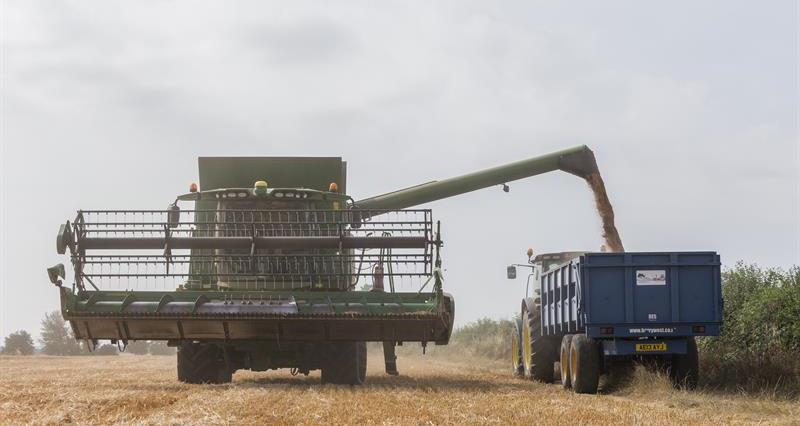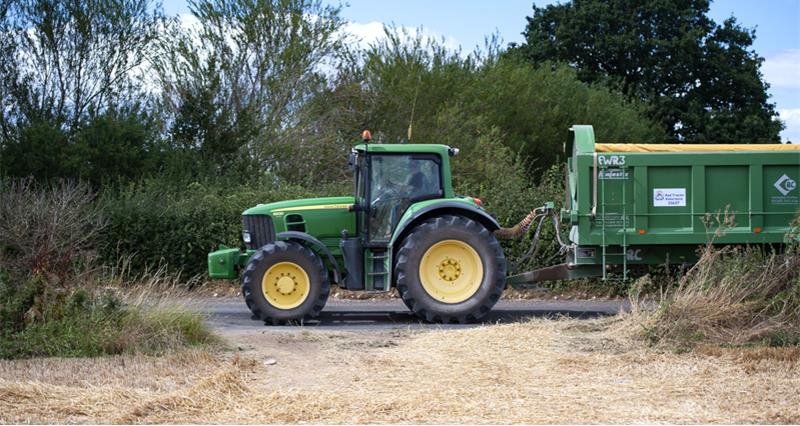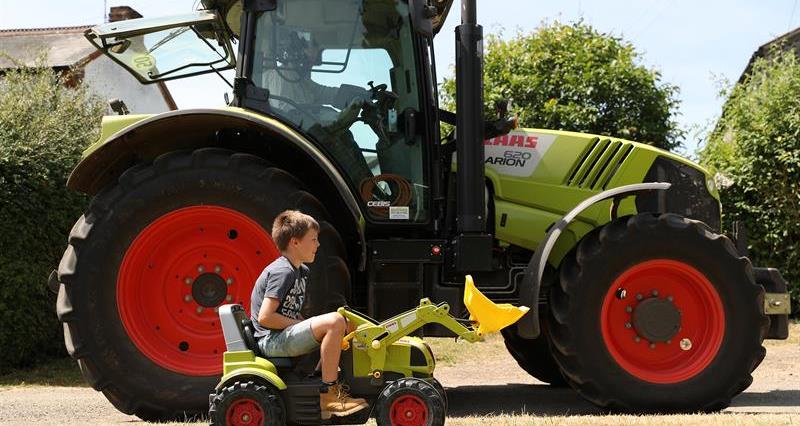In order to drive a tractor on the road, you need to have a category F driving licence.
There are two ways to get a category F licence:
- Pass a car driving test. Category F is automatically acquired when you pass a car driving test. It is an entitlement that is linked to car category B. So with a category B licence, a driver gets the entitlement to drive a car and also gets the entitlement to drive a tractor.
- Take a standalone tractor driving test. If you pass this test, you are issued with a category F licence. This allows you to drive agricultural tractors and trailers only. It will not cover any other type of vehicle.
What can 16-year-olds drive?
At age 16 a person with a category F licence is restricted to driving an agricultural tractor with a maximum width of 2.45m. This width restriction applies to both the tractor and the trailer with either a single axle or close coupled double axle.
Telehandlers and sprayers
Category B licence
Under the category B licence, holders have entitlements to drive other agricultural machinery including telehandlers, sprayers and harvesters on the road.
However, there are age restrictions on the maximum vehicle weights that can be driven by younger drivers:
- Agricultural vehicles up to 3.5 tonnes – minimum age 17
- Agricultural vehicles 3.5 tonnes to 7.5 tonnes – minimum age 18
- Agricultural vehicles over 7.5 tonne – minimum age 21
Please note that tractors are not subject to the age/weight restrictions.
Category H – tracked vehicles
Tracked vehicles steered by their tracks are in a separate H category. There is no automatic entitlement to drive vehicles in category H linked to the B category. In order to get the licence you need to drive tracked vehicles steered by their tracks, you must have passed an additional H category driving test.
This requirement is sometimes missed by drivers. If someone needs to drive a category H vehicle which is steered by its tracks, and they do not have a category H entitlement they should make arrangements to take the test as soon as possible.
Fast Tractors
High speed tractors only have two machines that fall into this category: JCB Fastrac and Mercedes Unimog, where the Unimog is registered as a tractor. The Unimog can fall within various categories and the rules which apply differ depending on its functionality, its use and how it is taxed with DVLA.
For advice on licence requirements and other information on fast tractors, visit: High speed tractors vs. standard tractors – what’s the difference?
Provisional licences
Driving on provisional licences should only be for training purposes. Any requirement to drive a vehicle for business purposes should be done on a full licence only.
Any person who is assisting an individual with the training of a vehicle should be at least 21 years old or over, hold the relevant licence and be experienced with the vehicle or machine which they supervising on.
Vehicles under categories B1 (Light vehicles and Quadbikes), F (tractor), G (road roller), H (track steered vehicle) and K (mowing machines and pedestrian controlled vehicles) are not always designed to carry passengers, meaning that learner drivers or operators are not required to be supervised by an appropriately trained individual. Sufficient training on the vehicles or machines under these categories should be carried out off-road before practicing on the public highway.
Seasonal worker considerations
As agriculture employ many seasonal workers from outside the UK it is important to understand the rules around temporary residents as non-UK driving licences are not always comparable with UK driving licences.
EEA/EU licences Northern Ireland, Jersey, Guernsey and Isle of Man
Any category of vehicle shown on the user’s licence can be driven in the UK on a temporary or permanent basis. When a driver from these regions reaches 70, they will need to exchange their licence UK licence, as their licence will expire.
If the resident has a car licence, but the country of issue does not include the tractor provision within the car licence, the resident will not be able to drive a tractor on this licence, and Category F test will need to be completed.
Countries applicable:
- Austria
- Belgium
- Bulgaria
- Croatia
- Czech Republic
- Denmark
- Estonia
- Finland
- France
- Germany
- Greece
- Hungary
- Iceland
- Ireland
- Italy
- Latvia
- Liechtenstein
- Lithuania
- Luxembourg
- Malta
- Netherlands
- Norway
- Poland
- Portugal
- Cyprus
- Romania
- Slovakia
- Slovenia
- Spain
- Sweden
Other countries
Workers will only be able to drive vehicles up to a MAM (maximum authorised mass) of 3.5 tons, and with up to 8 passenger seats. This information must be shown on the user’s licence.
Licences can be exchanged on arrival in the UK if the driver is staying more than 185 days. Exchanging for a category B licence will automatically grant the category F licence.
See Exchange a foreign driving licence – GOV.UK for more information.
- Andorra
- Australia
- Barbados
- British Virgin Islands
- Canada
- Cayman Islands
- Falkland Islands
- Faroe Islands
- Hong Kong
- Japan
- Monaco
- New Zealand
- North Macedonia
- Republic of Korea
- Singapore
- South Africa
- Switzerland
- Taiwan
- Ukraine
- UAE
- Zimbabwe
For any countries not listed here, contact DVLA.
Byways open to all traffic classification explained
All of the legislation discussed above is relevant to road use, and this includes when travelling on PRoW (Public Rights of Way) that are classified as BOATs (Byways Open To All Traffic).
A driving licence isn’t required for off-road use if you are driving on private land with the permission of the landowner. There is no public right of way for any vehicles on a footpath or bridleway (except pedal cyclists, who may use a bridleway). Landowners and occupiers may have private rights for their vehicles, which run in conjunction with a footpath or bridleway.
A BOAT is defined as “highways over which the public right of way is for vehicles and all other kinds of traffic, but which are used mainly for the purposes for which footpaths and bridleways are used”.
Driving on a BOAT is not ‘off road’ and anyone driving on a byway must comply with the Road Traffic Act. Drivers must obey the rules of the road, giving way to pedestrians and horse riders.
Vehicles that travel along BOATs need to be:
- Taxed according to the vehicle type.
- Insured.
- Have a current MOT, unless exempt.
- Have a number plate.
- Motorcyclists must wear a helmet.
Considerations should also be taken for:
- The age of the driver; they should have either a category F or category B licence, and if 16 with a category F, the above-mentioned restrictions apply.
- The weight of the machine, if not a tractor, the above-mentioned age restrictions apply.
- Non-UK licences, refer to the above list to check if additional licences are required.



